| Author |
Message |
|
Wolfgang Armbruster
|
 Posted: Fri 27 Jan, 2006 10:11 am Post subject: Rainguards - how common were they? Posted: Fri 27 Jan, 2006 10:11 am Post subject: Rainguards - how common were they? |
 |
|
Hello,
I searched the forums but couldn't find a thread dealing with them. So here's my question 
How common were rainguards on swords? When did they start using them?
So far I've only seen two swords with rainguards - the original sword Albion is using for their Munich-sword and the Svante-sword(by Albion, too).
I've seen rainguards on a few swords in Talhoffer's 1459 Fechtbuch but that's basically it.
I could imagine that most swords don't feature a rainguard because
a. it has rotten away so we don't see 'em anymore (rather unrealistic)
b. it would suffer too much damage in a fight anyway.
I'd like to hear your opinions. Maybe someone with more knowledge on swords could chime in 
|
|
  |
 |
Chad Arnow
myArmoury Team


|
|
    |
 |
Chad Arnow
myArmoury Team


|
 Posted: Fri 27 Jan, 2006 10:54 am Post subject: Posted: Fri 27 Jan, 2006 10:54 am Post subject: |
 |
|
My feeling was that they were not commonplace, but not rare either. They would have been of leather or iron or something more precious. Even if the rain-guard didn't survive, antiques still sometimes show, through their patination, that there was one at one time.
I'm fairly certain there are more examples in Oakeshott's Records of the Medieval Sword. I'll try to find some later today.

ChadA
http://chadarnow.com/
|
|
    |
 |
|
Brian M
Location: Austin, TX Joined: 01 Oct 2003
Posts: 500
|
 Posted: Fri 27 Jan, 2006 10:55 am Post subject: Posted: Fri 27 Jan, 2006 10:55 am Post subject: |
 |
|
In Oakeshott's books there are several examples of either swords that have rainguards, or swords that have lost them relatively recently due to careless handling.
I would think that "damage in a fight" would be a rather unimportant reason to not have a rainguard, since fights probably would have been quite infrequent, while rain would be quite frequent.
Brian M
|
|
  |
 |
|
Billy H
|
 Posted: Fri 27 Jan, 2006 12:01 pm Post subject: Posted: Fri 27 Jan, 2006 12:01 pm Post subject: |
 |
|
|
Is a raingaurd just type of flap to prvent rain from entering the scabbard? So a leather one could be put on just about any sword and replaced easily?
|
|
  |
 |
Greyson Brown

|
 Posted: Fri 27 Jan, 2006 1:38 pm Post subject: Posted: Fri 27 Jan, 2006 1:38 pm Post subject: |
 |
|
Oakeshott (in The Archaeology of Weapons, page 229) stated that he knew of only one existing sword to feature a rain guard (here refered to as a 'chappe'). That piece was dated to 1250, and was broken, so it could not have been the example that Chad mentioned from the Type XV spotlight. My general impression has been that they were most prevelant during the 14th century, but that is not based on actually study or research, just my impression as I read.
Obviously, there is a very good chance that rain a guard of leather is not going to survive, so I would not at all be surprised to find that they were much more common than the current archeological record surports. Still, I woulnd't think that every sword had one. My guess (and it is exactly that, a guess) is that 1 in 3 swords, at the very most, had a rain guard. of those, i would think that only a handful would have been metal.
Again, these are onyl guesses and general impressions; don't put too much stock in it.
-Grey
"So long as I can keep the path of honor I am well content."
-Sir Arthur Conan Doyle, The White Company
Last edited by Greyson Brown on Fri 27 Jan, 2006 6:06 pm; edited 1 time in total
|
|
  |
 |
Chad Arnow
myArmoury Team


|
 Posted: Fri 27 Jan, 2006 1:57 pm Post subject: Posted: Fri 27 Jan, 2006 1:57 pm Post subject: |
 |
|
| Greyson Brown wrote: | | Oakeshott (in The Archaeology of Weapons, page 229) stated that he knew of only one existing sword to feature a rain guard (here refered to as a 'chappe'). |
Greyson,
Oakeshott included several in Records of the Medieval Sword (a later publication than AOW).
Billy,
Yep. A rainguard or chappe could be made of several different things, but its job was the same: to keep rain out of the scabbard.
More info:
To correct myself from earlier: The Can Grande della Scalla sword has a rain-guard of some sort of fabric. It dates from prior to 1329.
The Visconti sword dates from the first 2 decades of the 15th century.
XVa.2's rainguard is missing on one side, it is of iron, with inlaid gold decoration around the edges. This sword dates from 1320-1340.
XVIa.2 dates from 1300-1325.
XXII.1 dates from c. 1440
Also from Records of the Medieval Sword, besides those mentioned already:
XVII.12 has a metal rainguard (according to Oakeshott, though it looks like a pronounced ecusson) and dates from 1380-1420.
XVIIIa.5, which Albion will someday replicate as the Munich Sword, dates from 1450-1480.
So we have them spread throughout the 14th and 15th centuries (or into the 13th based on Greyson's example). We have fabric, leather, and multiple metals used.
We can't just say they could have been common and corroded away with time, though. If they were widespread, we'd probably see more patination on crosses that indicated something (the chappe) had been against the cross, possibly making it more or less corroded at its center than the uncovered spots (depending on where/how the sword has been kept over the years).

ChadA
http://chadarnow.com/
|
|
    |
 |
|
Wolfgang Armbruster
|
 Posted: Fri 27 Jan, 2006 2:12 pm Post subject: Posted: Fri 27 Jan, 2006 2:12 pm Post subject: |
 |
|
Thx a lot the these very informative posts. I think I learned something 
|
|
  |
 |
Chad Arnow
myArmoury Team


|
|
    |
 |
Greyson Brown

|
 Posted: Fri 27 Jan, 2006 6:19 pm Post subject: Posted: Fri 27 Jan, 2006 6:19 pm Post subject: |
 |
|
Chad,
I would argue that the sword you mention is actually on page 95, but either way... Ii's not a big deal, as they are facing pages, but it is actually on page 95, and not the other. I must admit that I have a very bad tebdancy to overlook that page. I focus on the 14th century. Since that page divides the 14th from the 15th century within the context of the book, i overllook it more often than not. Without folks like Chad, i might be kept in check. Thank you for noticing the things I overlook.
-Grey
"So long as I can keep the path of honor I am well content."
-Sir Arthur Conan Doyle, The White Company
|
|
  |
 |
Chad Arnow
myArmoury Team


|
 Posted: Fri 27 Jan, 2006 8:38 pm Post subject: Posted: Fri 27 Jan, 2006 8:38 pm Post subject: |
 |
|
| Greyson Brown wrote: | Chad,
I would argue that the sword you mention is actually on page 95, but either way... Ii's not a big deal, as they are facing pages, but it is actually on page 95, and not the other. I must admit that I have a very bad tebdancy to overlook that page. I focus on the 14th century. Since that page divides the 14th from the 15th century within the context of the book, i overllook it more often than not. Without folks like Chad, i might be kept in check. Thank you for noticing the things I overlook.
-Grey |
There's no need to argue; you're correct: it's opposite page 94, on page 95. I made the typo while quickly thumbing through about 15 books looking for swords with rainguards to answer this post. 
I'm sure there are lots of things in books that get overlooked as we flip to the pretty pictures.  For example, I must have read *most* of Records of the Medieval Sword 10 times before someone pointed out the section on sword families and the preface. That switched the light on, and a lot of things made more sense. For example, I must have read *most* of Records of the Medieval Sword 10 times before someone pointed out the section on sword families and the preface. That switched the light on, and a lot of things made more sense.

ChadA
http://chadarnow.com/
|
|
    |
 |
Roland Warzecha

|
 Posted: Tue 20 Oct, 2009 7:04 am Post subject: Posted: Tue 20 Oct, 2009 7:04 am Post subject: |
 |
|
Claus Sørensen, head instructor of the Aarhus based HEMA school 'Laurentiusgildet', came up with the interesting suggestion that cross leathers as depicted in period art and displayed in some arms collections had an actual purpose related to fencing.
I for one had never bought into the idea of a rain guard. Swordsmen had kept their swords in scabbards for centuries without ever feeling the need to develop any such device before cross leathers came up somewhen around 1300 or maybe somewhat earlier.
I am instructor for historical sword & shield fencing myself and I will try to explain Claus' take on these leathers in this clip.
All the best,
Roland Warzecha
|
|
  |
 |
Sean Flynt

|
 Posted: Tue 20 Oct, 2009 9:10 am Post subject: Posted: Tue 20 Oct, 2009 9:10 am Post subject: |
 |
|
It's an excellent discussion, Roland! Thanks! The only problem I see is that it makes much more sense to position the leather so that it folds upward to cover the hand. If hand protection is the goal, it would seem to be much more effective to simply create ur-clamshell gaurds of hardened leather.
The idea of the D-shaped guards having an internal ring of leather is new to me and very interesting. I wondered how the flaps remain in place, even if the leather is stiffened, and this idea shows how that could be done. Is there archeological evidence for that construction?
I would add that there's another type of guard, discussed in another thread on this site (see below). This might be the kind you refer to as "intermediate". These combine the ring and flaps in a single piece stitched up both edges and extending over the cross and secured by stitching to a small extension of the grip leather. This is the kind I make for my longswords. One advantage of this design is that the tube of thick leather, with stitched edges, would better absorb the shock of the incoming blade (it can't fold back or collapse).
 Attachment: 61.92 KB Attachment: 61.92 KB
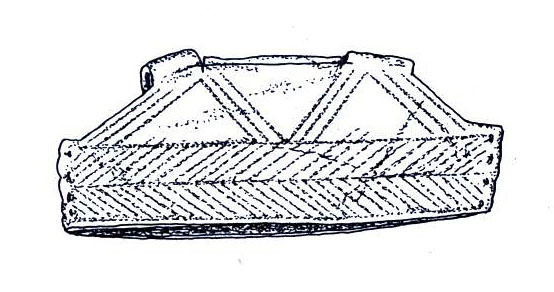
 Attachment: 78.91 KB Attachment: 78.91 KB
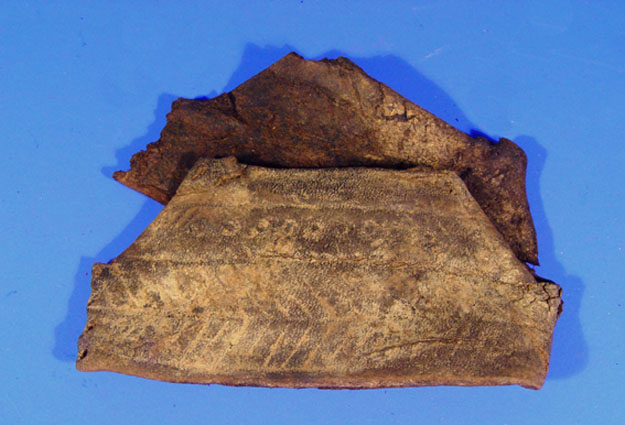
 Attachment: 50.18 KB Attachment: 50.18 KB
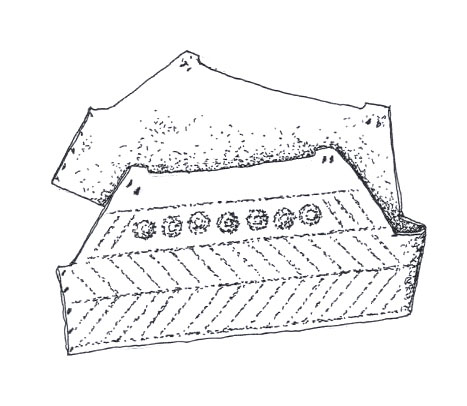
 Attachment: 60.58 KB Attachment: 60.58 KB
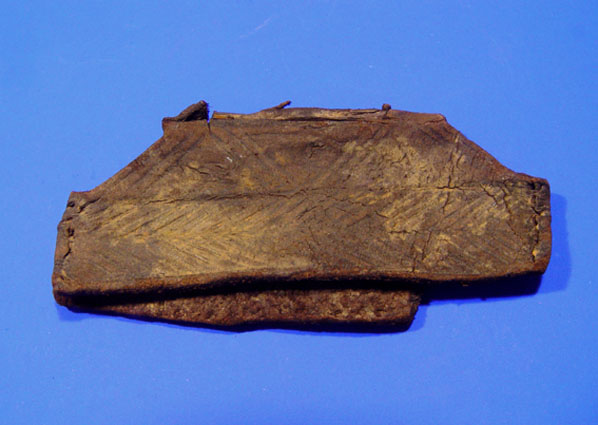
 Attachment: 86.56 KB Attachment: 86.56 KB

-Sean
Author of the Little Hammer novel
https://www.amazon.com/Little-Hammer-Sean-Flynt/dp/B08XN7HZ82/ref=sr_1_1?dchild=1&keywords=little+hammer+book&qid=1627482034&sr=8-1
|
|
   |
 |
Bill Grandy
myArmoury Team


|
 Posted: Tue 20 Oct, 2009 9:21 am Post subject: Posted: Tue 20 Oct, 2009 9:21 am Post subject: |
 |
|
Hi Roland,
Good to see you posting here!
I brought this up as a possible counter argument elsewhere, but something to consider is that these chapes are seen on swords where they will not protect the hand. Examples include some existing swords with a flared ricasso (the schilt seen on many period practice swords), where the chape is not able to protect the hand because the ricasso already does this. Also, consider many complex hilted swords, such as the sword of the Swedish King Gustav Vasa:
http://www.myArmoury.com/view.html?features/pic_vasa4.jpg
On these types of swords the chape is completely covered by the complex hilt, so it does not offer any hand protection at all.
Just some grist to throw into the mill.
HistoricalHandcrafts.com
-Inspired by History, Crafted by Hand
"For practice is better than artfulness. Your exercise can do well without artfulness, but artfulness is not much good without the exercise.” -anonymous 15th century fencing master, MS 3227a
|
|
   |
 |
Artis Aboltins

|
 Posted: Tue 20 Oct, 2009 12:44 pm Post subject: Posted: Tue 20 Oct, 2009 12:44 pm Post subject: |
 |
|
|
Hmm, aren't the swords in question of the later period? In that cae, it might be possible that, like with many other things, those "rainguards" that originially might have had primary function of additionall protection first, had became more of a decorative/traditional nature? Especially, if they are as ornate as the example on sword of Gustav Vasa? So the secondary function (decoration and rainguard) has taken over as primary at that time?
|
|
  |
 |
Roland Warzecha

|
 Posted: Tue 20 Oct, 2009 12:47 pm Post subject: Posted: Tue 20 Oct, 2009 12:47 pm Post subject: |
 |
|
Hi guys,
thanks for the feedback and also thanks for the excellent pics.
Where is the original from and what's the dating?
Also, nice craftsmanship, Sean. Looks fantastic!
There is - to my knowledge - no archeological evidence for the flaps being attached to a ring but it occurred to me when I saw what I called an intermediate type where the round flap is reduced to more of a triangular shape that reveals the ring around the blade. One such example is shown at the very beginning of the clip, though depicted in gold and therefor not necessarily meant to show leather (though we never know in religious contexts). Anyway, I will point you to other such examples if I can dig them up in my library.
The flaps in some of the plates in Paulus Kal were definitely just flaps, no rings:
Have a look here
I think that the oldest version just consisted of a flap that folds back so that the incoming blade glances off. I am fairly sure that I have seen a 13th century picture of a swordsman holding his sword point up and the flap hangs down over his hand. I will try to find it.
So I think that the ring version was a later development, though the flap was never given up completely. In the clip you see a split screen picture of both versions in one source (Master Franke, Thomasaltar, Germany,1425)
There are analogies to the protective effect of the ring. The bulky cross pieces of Roman swords might have served the same purpose. While I am convinced that at this time there hardly was any blade-on-blade engagements, you still might encounter eventual blade binds. If your opponent's sword slid down from the bind, the wide cross pieces would prevent a thumb hit. Same probably holds true for the tsuba on Japanese swords. And while we are at it: The Romans were fine with organic material for cross pieces for ages. So the protective purpose of the medieval cross leather should not be too quickly neglected based on the material alone. Something done by too many swordsmen too readily, I find.
I would like to make it clear that no protective device can be a substitute for clean technique which should prevent being hit or injured in the first place. Nor will a cross leather be of any use when the hand is directly hit. But Claus and I are not suggesting this. We are simply saying that there is a typical minor injury that occurs in unarmoured sword fighting (not wearing gauntlets) and that this can easily be prevented by such a device.
A ricasso or schilt on a training sword (feder) as depicted e.g. in Kal may eventually not catch a blade sllding in from the bind if the blade alignment ends up to be too vertical. i am not a big longsword guy, but Claus found this out the hard way with his Albion Meyer. Shit happens but a cross leather prevents a thumb hit here. We tried it out.
As for the Vasa sword, I agree that the metal ring around the base of the blade has to have a different function. Maybe it is a rain guard or scabbard lock or just designed to keep blood from running up onto the hand grip.
The fact remains that as soon as swords became common with infantry men in the 14th century, these leather additions are all over the place. At a time when you would expect a lot more blade binds in fighting. And for more than a century there were no complex hilt constructions to provide additional hand protection.
I will keep experimenting and keep you up-dated.
All the best,
Roland
|
|
  |
 |
Sean Flynt

|
|
   |
 |
|
JG Elmslie
Industry Professional
|
 Posted: Tue 20 Oct, 2009 4:03 pm Post subject: Posted: Tue 20 Oct, 2009 4:03 pm Post subject: |
 |
|
| Chad Arnow wrote: |
XVII.12 has a metal rainguard (according to Oakeshott, though it looks like a pronounced ecusson) and dates from 1380-1420.
|
at risk of blasphemy and heresy here (follow the gourd! no! follow the shoe! *ahem* ) I'm afraid I'm going to say that taking Oakeshott's description of Glasgow Museums A1973.7 at face value is a rather unwise move, as it's woefully inaccurate.
it's a lovely little sword - and I do mean little, as in person it's a really remarkably dinky thing. But it's also nothing like what he describes. the "rain-guard over the escution" is in fact integral to the entrie cross, and the "stamped marks" are in fact three inset latten/gold 5-armed florets over three peircings in the blade.
the commentary in RMS about its discovery is also incorrect... while it was uncovered by mechanical digger during the constuction of a motorway bypass, it was actually found by a person walking their dog on the site... who idly reached for the brown stick in the cutting opened up by the digger, to throw it for the dog... only for it not to be a stick, but that wonderful sword that slipped free of the earth.
now why can't I find things like that, eh? 
anyhow, have a photo of the wee beestie for your enjoyment:
[/i]
 Attachment: 124.42 KB Attachment: 124.42 KB
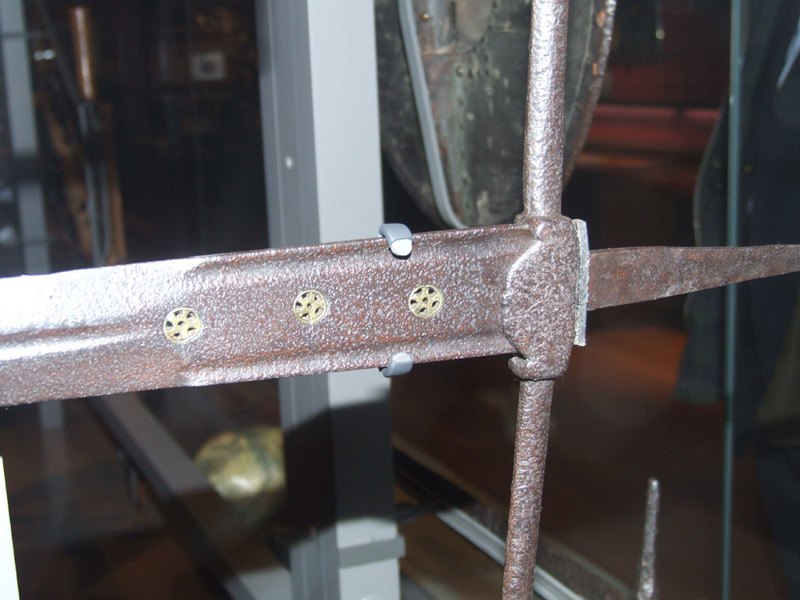
|
|
   |
 |
Roland Warzecha

|
 Posted: Wed 21 Oct, 2009 3:39 am Post subject: Posted: Wed 21 Oct, 2009 3:39 am Post subject: |
 |
|
Sean,
thanks for the link to the other discussion. very nice, very informative and great pictures.
I don't have any sources to back up the thumb protector thesis, safe for the experimentation we did.
I am convinced that if more practitioners of historical swordsmanship would occasionaly train without gauntlets or padded protective gloves when using steel trainers, they would quickly discover that this cross leather serves well when it comes to avoiding those flicking cuts from the bind.
Cheers,
Roland
|
|
  |
 |
Roland Warzecha

|
 Posted: Wed 21 Oct, 2009 3:40 am Post subject: Posted: Wed 21 Oct, 2009 3:40 am Post subject: |
 |
|
One more thing:
Could anyone who considers the cross leather a rain guard explain how the need for something like that came up in the first place? And of what kind of situation do you think it comes in handy?
A Civilian with a sword travelling in rain would wear a cloak which would cover the sword (including the hilt) - or stay in a dry place!
A soldier on campaign would wear a cloak, too, and if he is in action he will have to carefully clean all his gear from mud, blood and gore anyway. Hard to imagine that this bit of lether would make this task so much easier.
Actually, a piece of leather that is soaked with water or blood is more likely to cause rust rather than prevent it. It keeps the moisture and expose the metal to it long after any rain had stopped. Of course you have to keep the leather well-oiled to reduce the risk of staining the cross and the base of the blade.
Still, it would be easier to discard the cape and simply clean and oil your sword instead.
I simply have problems imagining the amount of rain it would take to constantly enter scabbard mouths (with the swords tucked into them) so that around 1300 swordsmen all over Europe suddenly adopted this little 'rain chape' and sighed in relief: " Finally! Now we only have to find something comparable for the hilts."
As for the triangular extensions on scabbard mouths popular the twelfth and thirteenth century:
At the moment, I have no explanation other than fashion. They sure were useless as rain chapes. On the contrary: Any water running down the grip and hilt would rather enter the scabbard, running down and soaking the inside of these extensions. Again, the moisture eventually kept in these extensions would rather cause more problems than help.
So,
whatever the original purpose was - thumb protection, scabbard lock, blood stopper - those cross leathers surely didn't come up to solve the problem of rain entering scabbards. That is a completely artificially made up thesis on a completely artificially made up problem with zero sources or archeological experimentation to back it up.
Had to say this!
Feeling better now,
Roland
|
|
  |
 |
|
|
You cannot post new topics in this forum
You cannot reply to topics in this forum
You cannot edit your posts in this forum
You cannot delete your posts in this forum
You cannot vote in polls in this forum
You cannot attach files in this forum
You can download files in this forum
|
All contents © Copyright 2003-2025 myArmoury.com — All rights reserved
Discussion forums powered by phpBB © The phpBB Group
Switch to the Basic Low-bandwidth Version of the forum
|

